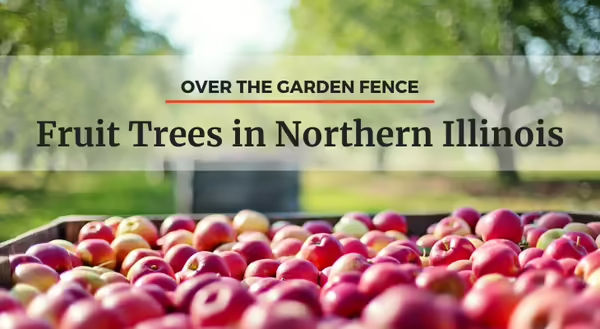
If you live in northern Illinois, the most frequently grown large fruit is very likely the apple. There is certainly nothing wrong with peaches, pears, plums or cherries, it is just that apples are the hardiest of them all.
Generally, we consider apricots and sweet cherries the most sensitive to our winter temperatures. Peaches and nectarines are very sensitive, followed by plum, pear and sour cherries, which are considered moderately sensitive. Then we get to apples, considered the least sensitive.
The location of the home orchard can make a real difference for the more sensitive fruit varieties. Protection from cold winter winds is a big deal. While the tree lives, flower buds may not. You hear stories of getting peach crop only every few years. You are more likely to have peaches when our winters are mild, and the tree is in a protected location. If they bloom very early like apricots and sweet cherries, the late frosts also can be responsible for loss.
Home orchardists also will have to deal with pollination concerns, especially with apples. While there are a few apple varieties that can set fruit on their own, all others require crosspollination. All the tree fruit catalogs will list other varieties that work best for crosspollination with your trees. Garden centers also carry the right varieties. The key is having two different varieties blooming at the same time. Flowering crabapples blooming at the same time will work too.
One caution to share is there are about 12 or so varieties known to be “pollen sterile;” they are able to be pollenated and produce an apple, yet unable to contribute viable pollen for use by other apples. If you plant one of these, you need to plant two more different varieties for proper crosspollination, so all three can fruit.
One of the misunderstood areas is what it will take to have that great-looking fruit once the tree begins to produce. For example, hardiest to least hardiest will be which fruits will require the least to most sprays, or another way to look at it is the length of a spray schedule from shortest to longest. In that order are cherries, early peaches, apricots, then later peaches, summer apples followed by plums, pears, and finally fall and winter apples. Your choices for a home orchard then may be the available time you have to properly manage a spray program, regardless of whether that is going to be organic or inorganic.
All fruit trees will need to be pruned and trained to provide the best structure. In general, home orchardists will spend the most time on apples with the least about of training with sweet cherries. Training can be ranked too. If you start with a standard apple (non-spur) the order is a standard apple, then to peach (and nectarine) followed by pear, apricot, then come the stone fruits like Japanese and European plums, sour cherry, then spur-type apples and finally sweet cherry.
While extremely rewarding, you can begin to see the time commitment is a big consideration, so start small and work your way up from there when planning your home orchard.
About the author: Richard Hentschel’s expertise extends across several subject areas with specialties in lawn care, fruit tree production, woody ornamentals, and home and community gardening. During his 45-year career in horticulture and agriculture, Hentschel became a well-known and respected expert for commercial and homeowner audiences, industry organizations, and media. He retired from University of Illinois Extension in April 2022 with nearly 30 years of service as a Horticulture Specialist and Educator in northern Illinois.